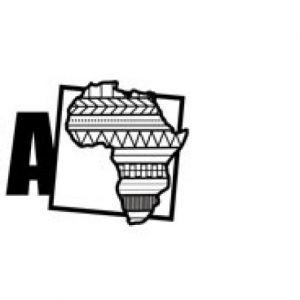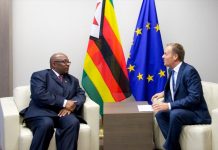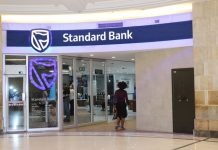In terms of section 46 of the Reserve Bank Act, the Governor is obliged to present a Monetary Policy Statement setting out measures to, inter alia, controlling Money Supply, Targeting Inflation for price stability, managing the exchange rate, stabilizing the financial sector, setting the bank rate and so on and so forth. Monetary Policy compliments Fiscal Policy to maintain macro-economic stability at all material times. Fiscal and Monetary Policy are like Siamese twins -one cannot exist without the other.
Policy plays a critical role in addressing economic challenges and putting the economy on the right trajectory. Did the Governor’ s Monetary Policy Statement do that?
This article interrogates the measures announced and determine whether these battery of measures address the financial and economic problems of the country as measured against the expectations of the people.
Public Expectation Number 1: Solving the problem of Cash Shortages:
It is a broken record to remind Zimbabweans that day in day out people are sleeping in bank queues in attempt to withdraw cash. The Monetary Policy Statement failed to address this problem. The Governor simply mentioned that the Bank will import additional bank notes and coins to raise the portion of physical cash to 10% of total deposits. There was no timeline given. Meanwhile bank queues are getting longer and longer.
Public Expectation Number 2: Bringing Back the United States Dollar
It is evident that the Zimbabwean economy has self-dollarized. Most transactions are done in Usd. For example in the Property Sector, rentals and Sales are in usd. In the fast food sub- sector products are charged in usd. In the fuel sector most Zuva Petroleum products are charged in usd. Many other Garages have followed suite. The airline industry has never de-dollarized from the beginning. These are examples of overt re-dollarization.
The majority of transactions in Zimbabwe are in the form of what i can call covert re-dollarization. This is happening in most retail sectors, the transport sector, electricity sector, education sector, health sector just to name a few examples.Yet the law forbids the use of the usd for local transactions. For the ordinary person, the usd is a store of value. Thats why tomatoes and chickens are charged in usd. In a covert fashion, those sectors mentioned above simply index prices to the usd. Period. This is re-dollarization by any other name.The public has rejected the mono currency.
What is the problem with the mono-currency? The answer is very simple. The mono currency is a weak currency which is not a store of value. It has lost value due to hyperinflation. But most importantly, it is not backed by anything. Money is a derivative asset whose underlying value is from production and reserves. In our case industrial capacity utilization stands at 29%. Which means there is very little or production that is taking place. Therefore the mono currency is subject to accelerated devalution
Public Expectation Number 3: Price Stability
Inflation is footloose. Estimated at 600% per annum Zimbabwe’s inflation rate is alarming. Prices are increasing by leaps and bounds and Zimbabwe risks re-entering the Gueness Book as the country with the highest hyperinflation. It will be the second bite of the cherry since 2008. The RBZ said measures will be put in place to reduce inflation to 50% by December 2020. Currently the Banks says month-on -month inflation was 5% as at end of January. This is far from reality. In my first first year study in the School of Economics i once read a book entitled ” How to lie with Statistics”. Indeed inflation figures in Zimbabwe are spurious. The data on inflation is soft. All the people know is that prices are increasing unabated.The jury is still out as to how the RBZ will contain inflationary pressures emanating from fuel price increases, electricity charges and other food imports. It does not require a rocket scientist to know that the 50% target is a pie in the sky in view of all these inflationary pressures.
Public Expectation Number 4: Exchange Rate Stability
The Monetary Policy Statement was mum on the exchange rate misalignment. The gap between the interbank market and the parallel market continues to widen. The usd is trading at 1: 30 on the parallel market compared to 1:17 on the interbank market. The RBZ simply says the bank will put measures to smoothen the functioning of the interbank market. No further details are given. Yet the devil is in the details. The parallel market is driving prices upwards and stoking hyperinflation.
Public Expectation number 5: building Reserves
The reserves at the RBZ are less than 2 weeks of import cover. This is a dangerous situation for an import dependent country. Zimbabwe faces critical shortages of medicines, food, fuel and electricity. Without reserves the country faces a balance of payments conondrum. Yet the RBZ statement never mentioned the issue of reserves.
I have addressed the gaps and shortcomings of the RBZ Monetary Policy Statement, now i turn to the Myths.
Myth Number 1: The Economy is de-dollarizing
According to the RBZ statement the banking system handled transactions in mono currency worth ZWL $ 459 billion hence this shows that the country is de-dollarizing. The opposite is true. The figure is inflated due to firstly the indexing i referred to and secondly due to hyperinflation. The figure has nothing to do with the fact of de-dollarization. The argument by the RBZ is what we call a ” fallacy of composition”. The truth is that the economy has self dollarized. Government is out of touch with reality.
Myth Number 2: Inflationary Expectations
The RBZ thinks inflation is being driven by the public’s expectations of future inflation based on their past experiences. This is theoretical and not empirically tested in Zimbabwe. Inflation drivers in Zimbabwe are real not viscaral. Inflationary expectations operate under perfect markets and assumes that all individuals and economic agents are rational and that there is no information assymetry.
CONFIDENCE
The problem in Zimbabwe is the lack of Confidence caused by legitimacy bone of contention. As the RBZ statement reveals, in 2019 Foreign Direct Investment (FDI) dropped from usd 717 million in 2018 to usd 250 million in 2019. Net portfolio investment dropped from usd 57.7 million in 2018 to usd 3.7 million in 2019. If this is not terrible what else is? The political stand off is a governance issue which must be addressed by genuine dialogue.
CARTELS
In a shocking revelation the RBZ disclosed that the banking sector is controlled by only 200 entities who own more than 60% of total deposits. This is a dangerous situation which can lead to the capture of the RBZ and the whole financial sector. What we need in Zimbabwe is financial inclusion not financial oligarchy.
Finally I have to comment on the usd 1.2 Legacy debt related to airlines, grain suppliers and fuel . This figure will certainly increase public debt. However, for the sake of transparency names of the Debtors and Creditors must be published by the RBZ.
Free Funds
On a positive note the RBZ has made an undertaking to protect free funds held in individual and corporate FCAs. This is a move in the right direction as it will boost confidence in the banking sector
Bank Capital Requirements
The review of capital requirements will ensure that financial institutions will have enough capital to backup deposits.














